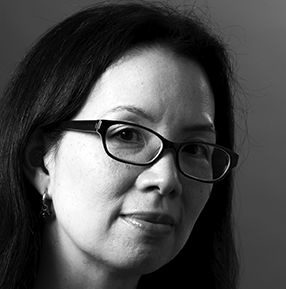Personal History
The world’s largest Confederate monument
was too big to perceive on my earliest trips to the park.
Unlike my parents, I was not an immigrant
but learned, in speech and writing, to represent.
Picnicking at the foot and sometimes peak
of the world’s largest Confederate monument,
we raised our Cokes to the first Georgian president.
His daughter was nine like me, but Jimmy Carter,
unlike my father, was not an immigrant.
Teachers and tour guides stressed the achievement
of turning three vertical granite acres into art.
Since no one called it a Confederate monument,
it remained invisible, like outdated wallpaper meant
long ago to be stripped. Nothing at Stone Mountain Park
echoed my ancestry, but it’s normal for immigrants
not to see themselves in landmarks. On summer nights,
fireworks and laser shows obscured, with sparks,
the world’s largest Confederate monument.
Our story began when my parents arrived as immigrants.
Copyright © 2019 by Adrienne Su. Originally published in Poem-a-Day on December 4, 2019, by the Academy of American Poets.
“The tragic events in Charlottesville in 2017 opened my eyes to a Confederate monument that had stared me in the face throughout childhood: the massive sculpture of Robert E. Lee, Stonewall Jackson, and Jefferson Davis on the face of Stone Mountain, a short drive east of Atlanta, my hometown. Stone Mountain Park is Georgia’s most visited tourist destination, and my own memories of it include hiking up the trail on the back of the mountain, setting out a blanket to watch a laser show, and walking among the goldfish ponds at the mountain’s peak. When I learned the obvious (that the carving is the world’s largest and perhaps least erasable Confederate monument) as well as the less obvious (that the carving, begun in 1923, had stalled in 1928 but resumed in 1964 in response to Brown v. Board of Education and the Civil Rights Movement), I wanted to write about the shock of delayed comprehension. Yet my first year or so of poem attempts were too predictable in their sense of betrayal and cluttered with an abundance of place-based memories. Eventually, the off-rhyme of ‘monument’ and ‘immigrant’ provided a path around those pitfalls — a path that led to the villanelle, which confined the anecdotes and avoided a ‘gotcha’ ending by announcing the poem’s conclusion from the start.”
—Adrienne Su

